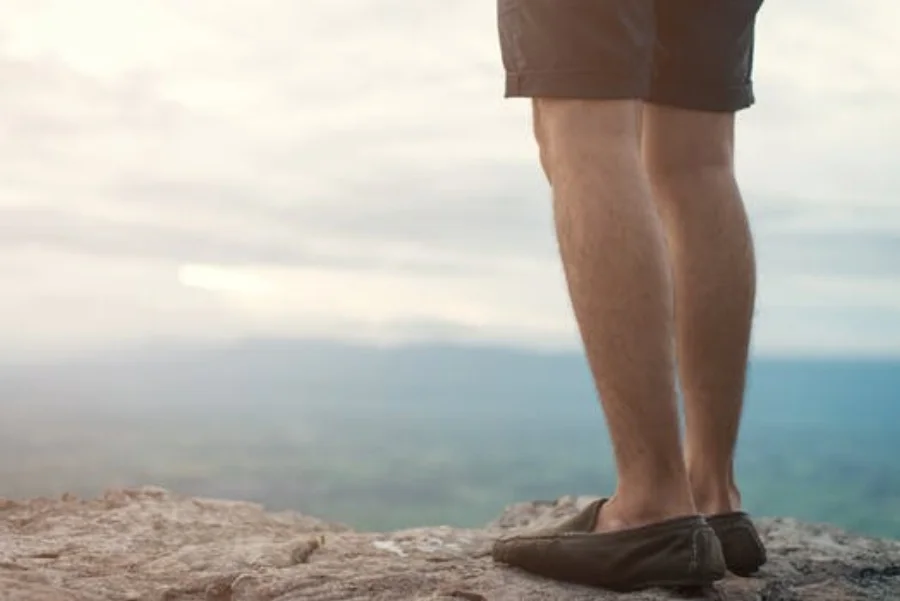Dads, Men Can Get Varicose Veins Too!
It is a problem that many men ignore – leg pain, swelling, muscle cramps, restless legs at night and ankle swelling; and then the thick raised veins on your legs that you cover up in the summer by wearing long pants instead of shorts. Most men know about varicose veins because of complaints from the women in their life about the discomfort and they become bothered by the unsightly appearance of their leg veins. So women are far more likely to do something about it
Men very often just ignore the problem thinking it’s a ‘women’s disease”. But varicose veins are not restricted to females – as many as 43 percent of men will develop some type of venous disease by the time they reach 60 years of age.
Busy dads very often ignore the problem, and fail to do anything about it by seeking medical attention. If you do nothing there can be actually be some severe adverse health problems as a result. So let’s talk about what causes varicose veins, their symptoms and diagnosis so that you know what you might be up against.
What Are Varicose Veins?
These are veins have become enlarged and twisted., most commonly in the legs, that become so enlarged they start to bulge out of the skin, and often become discolored , so that they appear as purple or blue. Veins are tiny pipelines that pump blood towards the heart. They have tiny one-way valves that prevent blood from flowing backwards. However, if these valves fail, blood begins to pool in the veins, instead of flowing and the veins then enlarge because of the increased blood volume.
Varicose veins are commonly in the legs because these veins are the farthest away from your heart, and gravity makes the upward flow of blood harder.
As you can imagine, they can cause level of discomfort in the legs and feet, because varicose veins are a sign of poor blood circulation throughout the body, which can be a major cause for concern about overall health.
According to The American Society for Vascular Surgery, between least 20 to 25 million Americans have varicose veins. Statistics further show that 17% of men and 33% of women have varicose veins. The problem is so endemic that more people are unable to work due to vein disorders than due to arterial disease. (Vascular Disease Foundation Newsletter, Spring 2005).
What Causes Varicose Veins?
So now you know what varicose veins are, it is important that you recognize the causes and symptoms, which you can learn to recognize before the typical swollen veins that manifest . You should know that poor lifestyle choices and habits, such as being sedentary, and unhealthy eating habits are common factors – in a study by the National Institutes Of Health (NIH) in 2005, researchers found that varicose veins are most common in Western Nations where people do not perform a lot of physical activity.
Causes
In brief, some major causes of varicose veins in men include:
- Obesity
- Standing or sitting for long periods of time
- Age over 50 years
- Sedentary lifestyle
- Having a family history of varicose veins
Symptoms
You will doubtless be able to see the visibly blue or purple misshapen veins that appear usually on your legs. Sometimes, if the veins are relatively small, and are a small percentage of the total blood flow, you may not feel any or many ill-effects, and as long as you are not bothered by their appearance, you may not feel that you need any treatment for them. However, they can be a symptom of a larger problem, so even if you do not experience the following varicose vein symptoms, make sure to seek medical advice.
- Cramping, especially at night
- Heaviness or aching of the legs
- Cramping, especially at night
- Restless leg syndrome
- Skin color or texture changes
You may also have pain, swelling, heaviness, and achiness over or around the enlarged veins and if severe the veins can bleed and ulcers can form.
I'm Scared! What Happens - How Does A Doctor Diagnose Varicose Veins?
Many men avoid going to the doctor because they do not know about the minimally invasive procedures available for varicose vein treatments and are scared that they will need a major operation.
Your doctor will probably examine your legs and visible veins while you’re sitting or standing to diagnose varicose veins. As you would expect they will may ask you about any pain or symptoms you’re having.
Most doctors use a diagnostic ultrasound to map out the network of veins and check the blood flow, using high-frequency sound waves. This enables your doctor to see how blood is flowing in your veins. Importantly, these tests will ascertain that another serious disorder like a blood clot or other blockage isn’t causing the symptoms of pain and swelling in your legs.
This test does not involve a major medical procedure and will quickly help the diagnosis. The other good news is that doctors tend to be conservative when treating varicose veins. In most non-extreme cases you’ll probably be advised to improve your lifestyle and make healthy changes to your diet and exercise, before they recommend more aggressive medical treatments.
So now you know that varicose veins are very much a male health issue too. Don’t’ worry about being vain - look after your veins!




